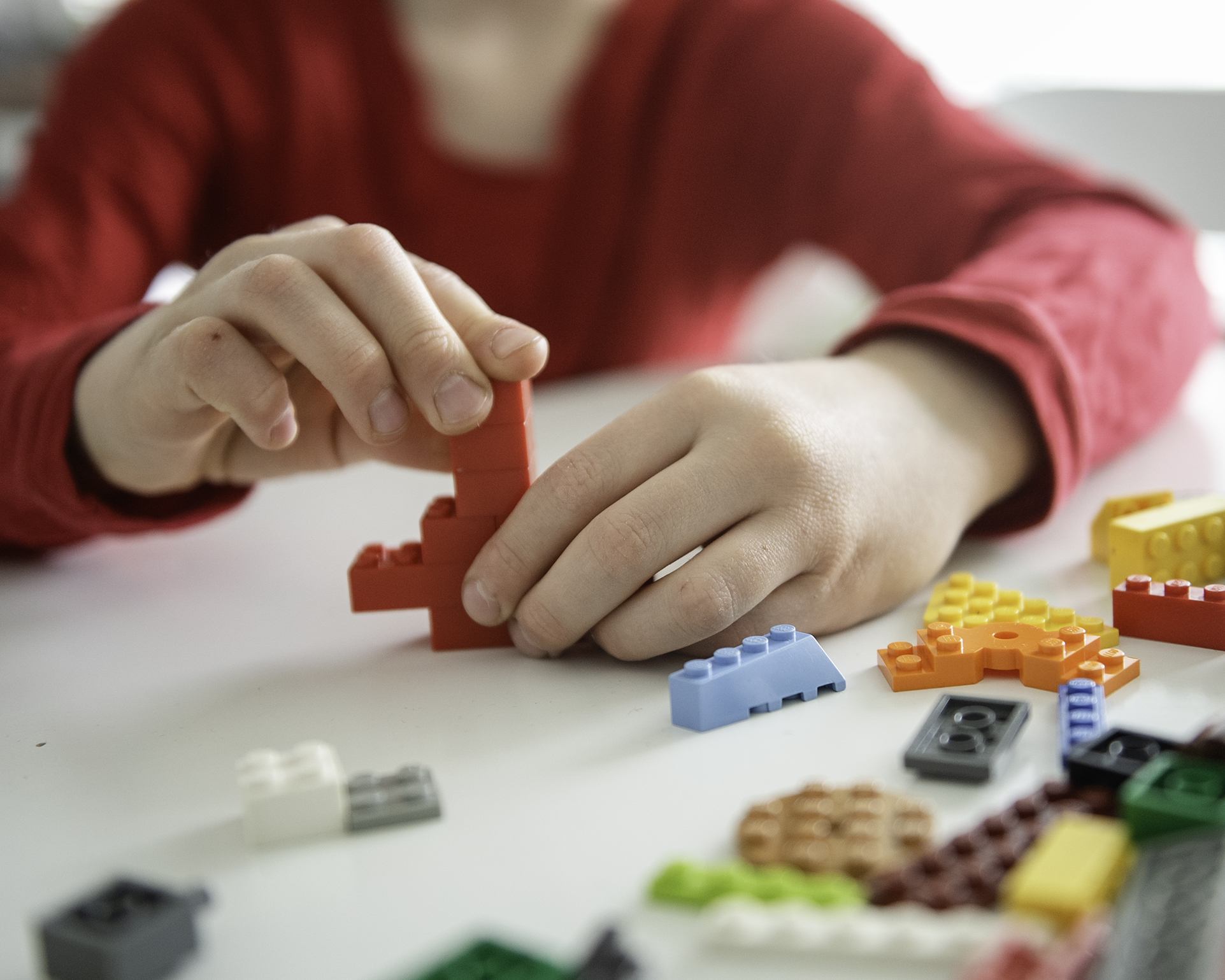Can building with Legos lead to better integration?

During the sessions participants build own pieces and eventually merge them into a collective project. PHOTO: NADIIA FEDOROVA.
Aleksandr Trifonov
Published 30.04.2025 at 12:47
Updated 09.05.2025 at 3:40
Building with ordinary Lego blocks can help to integrate the immigrant youth. At least this is what the Educational Initiatives Center, a Finnish non-profit organization, believes.
With the funding from the European Union, they have launched a project called “Bricks with meaning, 2.0.” The project will consist of sessions, where teenagers with immigrant backgrounds come together to build Legos.
The name of the project comes from Estonia, where the original Bricks with meaning 1.0 project ran in 2022.
The idea is that if facilitated correctly, the building session helps youngsters to integrate into a group.
One session was held in Helsinki in March. Six youngsters, aged 12 to 13, participated. All were migrants or children of migrants and shared Russian as a common language.
To avoid influencing the participants, the organizers would not let outsiders observe the session. However, they were willing to share the content, and Satakieli was allowed to discuss it with the participants.
Building bridges and connecting them
In the session, the participants were asked to build a bridge and add a character representing themselves to it.
Every participant then explained the reasoning behind their design. Others were encouraged to understand using the principle “listen with your eyes”. The idea is that buildings would showcase the participants’ identity without needing to rely on verbal communication only.
The organizers also believe that it makes sharing easier when people can talk about the model rather than directly about themselves. Moreover, as people borrow elements from each other during the building, it encourages tolerance and dialogue.
Finally, the individual bridges were connected to form a collective structure, “a city”. That represents the group’s shared future that every participant has been contributing to building.
The first part of the session seemed to work better than the latter one, says Eduard Khakimov, the head of the Center for Educational Initiatives and an educator with a migrant background.
“The teenagers eagerly built their ‘self’ models. But the task of creating the shared world was completed rather formally.”
According to Khakimov, the participants basically just moved their creations onto a shared platform without interaction.
“We believe it is possible that they are not yet psychologically ready for mutual coordination and adaptation.”
However, they plan to organize further sessions with the same group.
A method with pros and cons
Bricks with Meaning is based on “Lego Serious Play” method. It was developed in the late 1990s by the Lego company and International Institute for Management Development (IMD). In 2010, Lego released the method for distribution under an open licence.
What motivated the development was Lego company’s need for new innovations, as digital pet games threatened traditional brick sales. The original idea was to use Lego blocks in workshops for companies and organizations. There it proved to be effective for problem-solving and strategy work. Using the method to support the integration of immigrant youth is still a rather new application.
Associate professor Birte Nienaber from the University of Luxembourg has researched the Lego Serious Play method and its applicability to vulnerable groups. She finds both strengths and weaknesses in using the method with immigrant youth.
The strengths include that the method gives the participants an experience that they are heard and recognized.
“It picks the young people up directly from where they are, with their experiences and challenges,” Nienaber says.
“They are empowered because, on the one hand, they reflect on their own situation and, on the other, they find resonance and, possibly, even encouragement.”
Weaknesses come from language and the organization of the sessions. Even though the building blocks can help to cross language barriers, some kind of common language is needed. But the biggest challenge is the need for a professional facilitator.
According to Nienaber, an unqualified facilitator risks retraumatizing participants or mishandling sensitive topics. Further risks relate to the age group: teenagers may view the sessions as too childish, which requires additional motivation and preparation.
The Center for Educational Initiatives addresses these concerns by recruiting facilitators who combine formal pedagogical training with hands-on experience in youth work. All facilitators complete additional in‑house instruction before leading a group, Khakimov says.
Their Bricks with meaning 2.0 runs until November 2025. The project cooperates with various non-profit organizations from other EU countries, including Eesti-Mordva Selts (Estonia), Fundacja Młodzi dla Europy (Poland), and Eduplius (Lithuania).
The article has been edited on May 9, 2025 at 15:39. Corrected the spelling of the name of the NGO Educational Initiatives Center